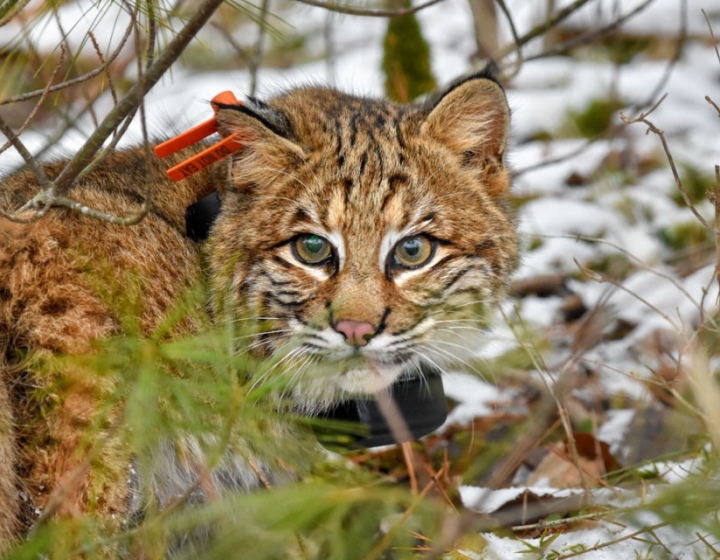Poultry
On February 8, 2022, The United States Department of Agriculture (USDA) Animal and Plant Health Inspection Service (APHIS) confirmed the presence of Highly Pathogenic Avian Influenza (HPAI) H5N1 in a commercial poultry flock in Indiana. This detection coincided with several detections in wild birds in South Carolina.
Since then, millions of poultry have been affected in all 50 states and Puerto Rico (see confirmed detections). The virus was detected in Europe and Canada in 2021 and got into the US through the seasonal migration of wild birds, especially wild waterfowl.
On March 12, 2025, USDA-APHIS confirmed another strain of HPAI, called H7N9, in a broiler breeder flock in Mississippi. In early 2025, APHIS documented a low pathogenic strain of H7N9 in its wild bird surveillance. The last time HPAI H7N9 was reported in the US was in March 2017.
What is HPAI?
Highly Pathogenic Avian Influenza is a contagious disease caused by an influenza Type A virus of the Orthomyxoviridae family. Type A influenza viruses can infect human, swine, equine, and avian species but occur naturally in wild waterfowl which do not show any clinical signs. When wild waterfowl mix with domestic poultry, they can transmit the virus. Influenza virus classification into types A, B, or C is based on variations in their nucleoprotein (NP) and matrix protein (MP) antigens. Further subtyping is based on the surface antigens Hemagglutinin (16 H types) and Neuraminidase (9 N types). Finally, avian influenza viruses are classified as either high or low pathogenicity based on genetic sequencing. Almost all highly pathogenic avian influenza strains or types belong to H5, H7, and sometimes H9. HPAI H5N1 is of particular significance to public health due to its zoonotic nature.
The New York State Animal Health Diagnostic Laboratory is at the forefront of testing and diagnosing poultry flocks for HPAI H5N1 in the Northeastern United States. In cooperation with the state of New York and the USDA, the lab carries out active avian influenza surveillance testing for live bird markets and passive surveillance for poultry submitted for necropsy.
What are the clinical signs of HPAI?
Clinical signs are variable but can include all or a combination of the following:
- Sudden death without any prior symptoms of illness
- Lack of energy and appetite
- A drop in egg production or soft-shelled, misshapen eggs
- Swelling of the eyelids, comb, wattles, and shanks
- Purple discoloration of the wattles, comb, and legs
- Gasping for air (difficulty breathing)
- Nasal discharge, coughing, sneezing
- Twisting of the head and neck (torticollis)
- Stumbling or falling down
- Diarrhea
HPAI in New York State
HPAI Detections in NYS (Updates from the Department of Agriculture and Markets)
On February 18, 2022, New York State saw its first HPAI H5N1 outbreak in a backyard flock in Suffolk County. Since then, dozens of flocks have been infected. Recent confirmations include Queens, Delaware, Dutchess, and Onondaga counties. These were all at either live bird markets or backyard flocks.
Several recent outbreaks in live poultry markets have led the Governor of NY state to issue an temporary market shutdown that lasted for a week, from February 7-14, 2025 (see Emergency Order for Shutdown of Live Bird Markets). During the shutdown, the NY State Department of Agriculture and Markets and USDA collaborated on the depopulation of birds, cleaning and disinfection of premises, maintaining a fallow period, and testing of markets before restocking. The markets have been cleaned and disinfected and temporary closure of live bird markets was lifted.
A New Notice and Order of Testing Requirements For All Poultry Moving to Live Bird Markets was issued. Recent outbreaks in live bird markets have led to a similar strategy to prevent further transmission by closing the market to enable cleaning and disinfection, and then testing prior to reopening.
Important links and numbers
For veterinarians and farmers, if you suspect HPAI in a patient at your clinic or farm, please call your state department of agriculture or state animal diagnostic lab or any of the following numbers or links for further instructions.
- For New York State, New York State Agriculture and Markets – Division of Animal Industry: (518) 457-3502 Avian Influenza in New York State
- United States Department of Agriculture (USDA): (866) 536-7593
- New York State Animal Health Diagnostic Lab: (607) 253-3900
- For backyard flock owners (APHIS/USDA)
- Avian Influenza Detections in Poultry (APHIS/ USDA)
- Avian Influenza (APHIS/USDA)
- CDC summary of Avian Influenza
This page was last updated on Friday, Apr 04, 2025







